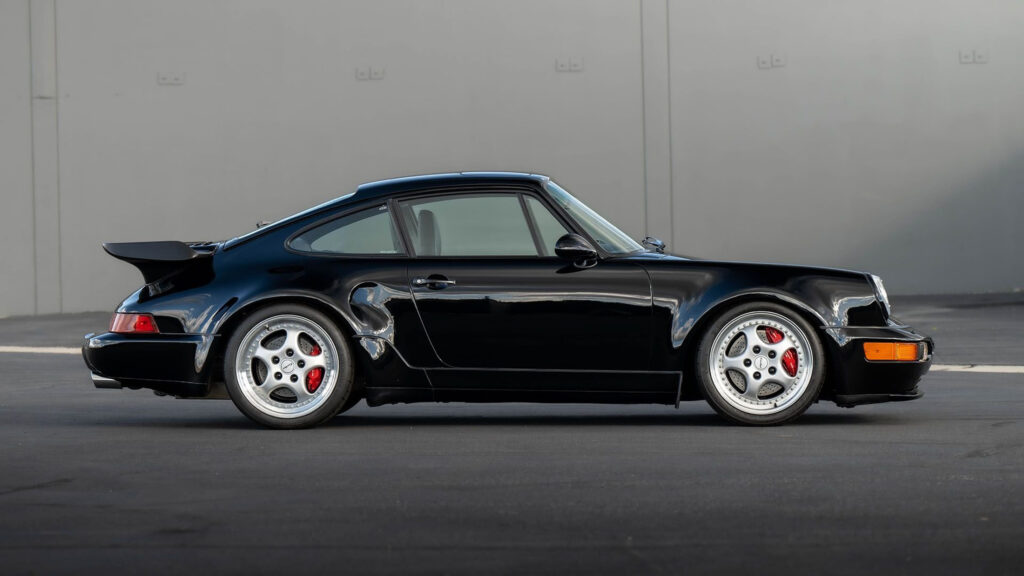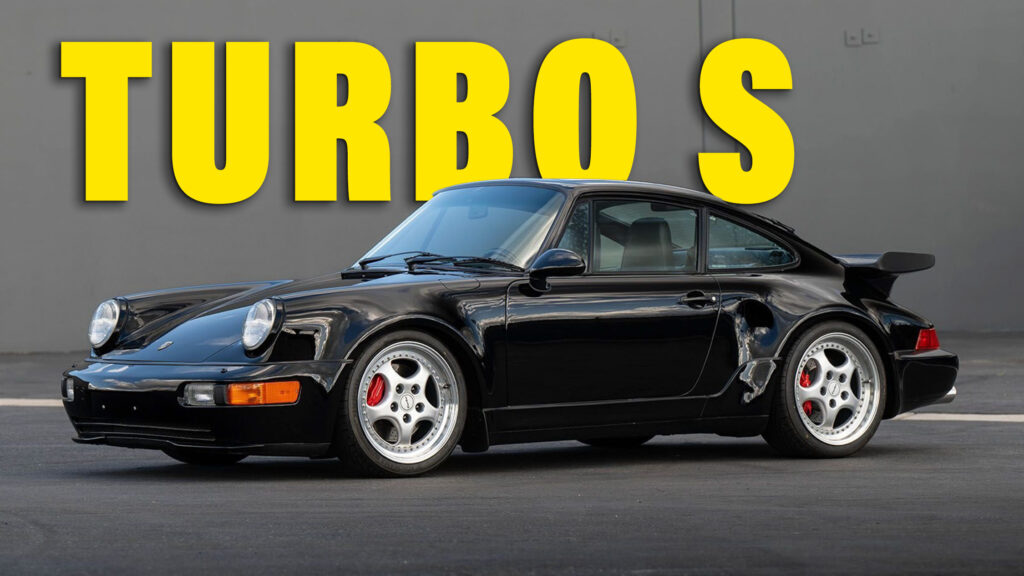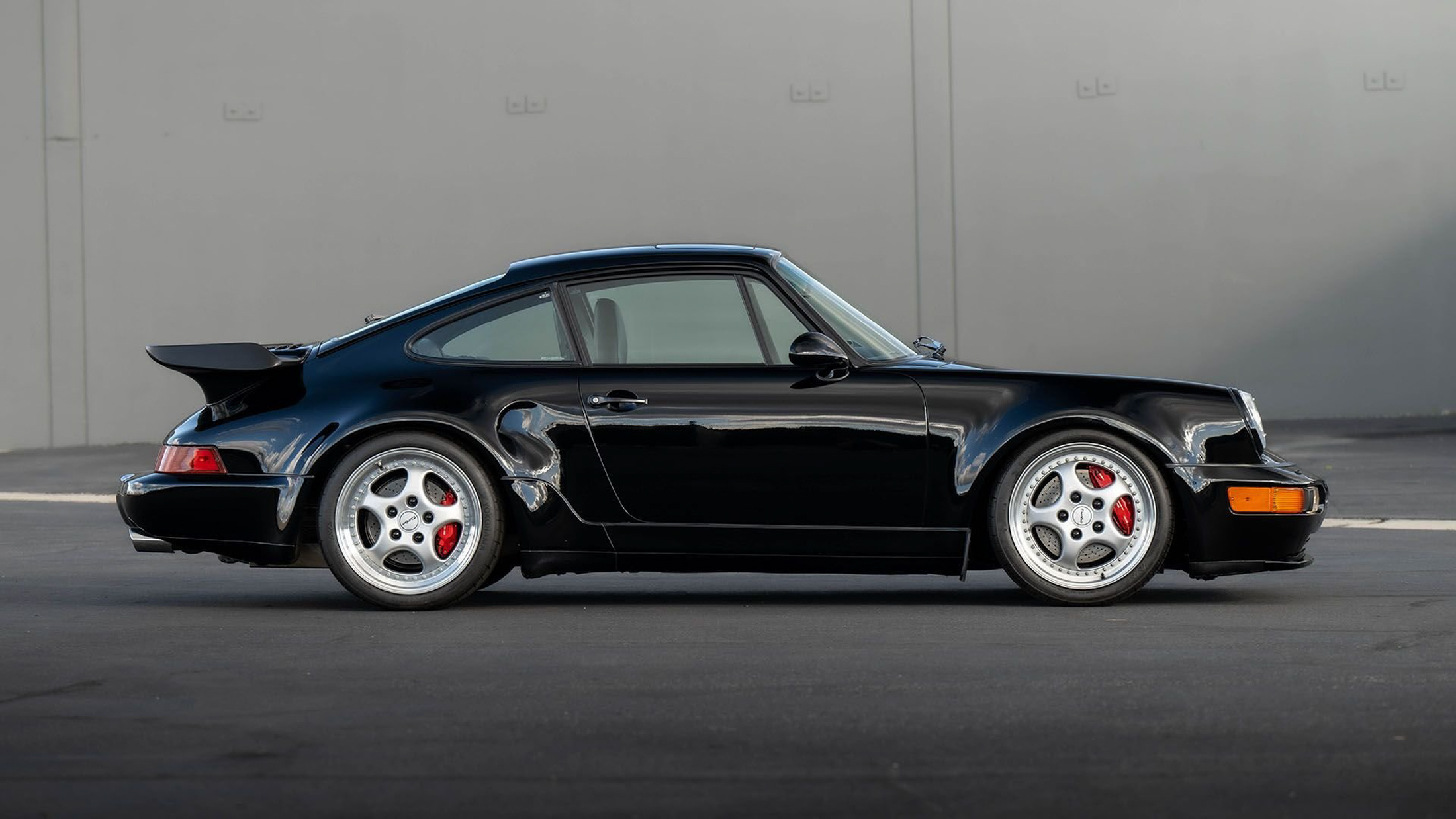The 964 is where the old and new 911 worlds collide. Revealed in 1988, the 964 looked at first glance like a facelifted version of mostly like the earlier G-Series that had been on sale since the early 1970s. But there were some major changes under the skin, like a switch from a torsion bar to coil-sprung suspension, and the the long-overdue addition of power steering and anti-lock brakes for the first time.
That fusion helps explain why for many Porsche fans the 964 is the ultimate classic 911, and if we’re going to drill down even further, the Turbo S is arguably the dream version of that generation. Sure, some people prefer to lust after the raw RS, and its even wilder RS 3.8 brother. But for street use the Turbo S’s strong package of power, pose, and luxury gives it huge appeal.
It was a rare car, with only 93 being made right at the end of 964 production as Porsche was getting ready to reveal the all-new 993. And of those 93, just 17 came with the traditional bug-eye 911 face, the remaining buyers all choosing the optional Flachbau sloping nose and tilting lights. Like the regular Turbo, the S stuck with rear-wheel drive (the later 993 Turbo would move to AWD), but it got stiffer, lower suspension, gorgeous three-piece Speedline wheels and tell-tale S vents in the flared rear fenders. The other key ingredient was an X88 tuning package for the 3.6-liter engine that boosted power from the usual 355 hp (360 PS) to 380 hp (385 PS).
Related: The $2.2 Million Porsche Racing Car You’ve (Probably) Never Heard Of

Compared with the no-frills RS models, the Turbo S was still fairly luxurious, despite looking like a track machine on the outside. The triple-black interior of this example features leather coverings for the door panels, console, and dashboard, and there’s also a sunroof. Perhaps the biggest surprise is that it was ordered with the standard, relatively flat comfort-spec seats, rather than the sports versions with the much bigger bolsters.
Maybe the original owner was a chunkier guy and found the sports chairs too snug, or maybe he planned to do a ton of daily driving and thought the stock seats would be more practical. If he did plan to use it daily he must have changed his mind. By 1998, when the second owner took custody, the S had only covered 7,460 miles (12,000 km), and today the odometer still only shows 21,940 miles (35,300 km).
You might have heard about how values of classic cars, including Porsches, have dropped a little in the past year or so. But there’s no chance of them falling far enough to make a 911 as rare and desirable as this affordable to anyone but multi-millionaires, and Broad Arrow Auctions estimates it’ll go for between $1-1.2 million when the hammer drops in March.














































